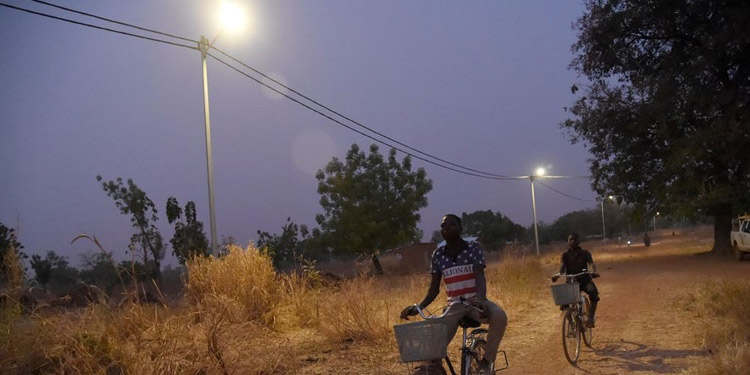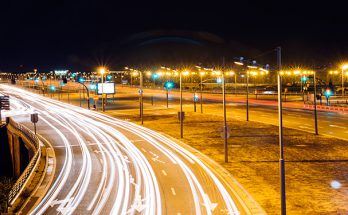 Kennedy Kibedi, a social media marketing specialist who works in tourism in Jinja City, says he believes the new street lighting had boosted Jinja City’s tourism sector. Uganda closed its borders at the start of the pandemic, but before that, Jinja City, the “adventure capital of East Africa,” attracted foreign tourists for outdoor activities including boating on Lake Victoria or bungee jumping over the Nile. Other visitors come to see the city’s colonial architecture or to attend annual music festivals such as the Nyege Nyege Festival, which features East African electronica artists and attracts tens of thousands of fans each year.
Kennedy Kibedi, a social media marketing specialist who works in tourism in Jinja City, says he believes the new street lighting had boosted Jinja City’s tourism sector. Uganda closed its borders at the start of the pandemic, but before that, Jinja City, the “adventure capital of East Africa,” attracted foreign tourists for outdoor activities including boating on Lake Victoria or bungee jumping over the Nile. Other visitors come to see the city’s colonial architecture or to attend annual music festivals such as the Nyege Nyege Festival, which features East African electronica artists and attracts tens of thousands of fans each year.
“We have seen a huge increase in the number of visitors,” Kibedi says, “and I believe street lighting plays a role in that because you can now see tourists walking in the streets at night.” They don’t feel threatened, which I believe has a significant effect on tourism.”
The rapid implementation of solar street lighting in cities with limited access to traditional power generation is an example of Sub-Saharan Africa’s technological “leapfrogging.” However, Uganda’s transition to solar-powered street lights has not been without its difficulties. While the startup costs are smaller than for traditional lighting, they still put a strain on already-strapped city budgets. The local planning department’s limited technological capabilities also restrict the scope for wider adoption in Jinja City. A World Bank programme called Uganda Support to Municipal Infrastructure Growth, or USMID, is providing financial and technical assistance to address both issues: Until 2023, the programme has pledged $510 million to help infrastructure growth in areas like Jinja City. Jinja City now has a master plan, thanks to technical assistance from USMID, that will allow for the continued deployment of solar-powered street lights throughout the city.
Mbayo says that the Ugandan Central Government has recognized the potential for continued rollout in Jinja City and recently allocated funds to light an additional 54 kilometers of streets — a significant portion of the roughly 380 total kilometers of roadway in the city. Now, the role of the city council is to identify which streets will be lit next. Mbayo hopes that the funding will allow the city to complete lighting the central business district.
“We are also working towards ensuring that our city’s financially self-sustaining,” says Mbayo. The goal is that after USMID support has been withdrawn in a couple of years, Jinja City will continue to develop according to its new master plan.
Mbayo says the lesson for other cities is that solar-powered street lighting can be the first step on a longer path toward sustainable urban development: he’s shared Jinja City’s success stories and lessons learned with city officials in other African cities, including Freetown, South Africa, and Dakar, Senegal.
The lesson for other cities, according to Mbayo, is that solar-powered street lighting can be the first phase on a longer path toward sustainable urban development: he’s shared Jinja City’s success stories and lessons learned with city officials in other African cities, including Freetown, South Africa, and Dakar, Senegal.
The success of these efforts could have broad effects on the region: Researchers suggest that if solar-powered street lighting continues to be installed in sub-Saharan Africa, it could add tens of thousands of working hours daily by extending the workday past sunset while slashing electricity consumption from street lighting by 40%. Solar lighting could generate between 96 and 160 gigawatts of renewable energy across the subcontinent — more than doubling the current rate of energy generation. “We have no doubt what we’re doing here is impacting people’s lives,” says Mbayo, “and we want this to go to other cities.”



